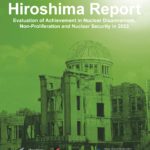Chapter 3 Reconstruction Planning Introduction
The reconstruction of Japanese cities after the war was quite remarkable. In particular, Hiroshima’s reconstruction after the atomic bombing is evaluated as a rare accomplishment. It was thought that reconstruction of the city from the ruins would be nearly impossible; but the reconstruction plan pursued the highest ideals attainable at the time, with ambitious plans for roads, parks, green areas, and land readjustments. Therefore, there were numerous difficulties that had to be overcome in the reconstruction process. Citizens and those who were engaged in the planning and the implementation of the reconstruction had to work hard and at times endure sacrifices. At the same time, various forms of aid and support from overseas helped to overcome the crisis that followed in the aftermath of the bombing.
In Japan, as there had been institutions such as city planning systems and a certain degree of human resources and mechanisms in place since before the war, reconstruction efforts started at a relatively early time. That being said, this particular reconstruction process was made possible due to numerous conditions present in those days and by a chance combination of factors at the time. In this sense, it was miraculous. This chapter tries to elucidate Japan’s reconstruction process and particularly that of Hiroshima, which was in far more sever condition than other cities. It must also be clarified that the reconstruction of Hiroshima was implemented while the city was faced with many unsolved problems, some of which were carried over to later years.
Notes and References








